Healthy competition in North American tower crane sector
08 November 2022
“Rise together to build a better world.” The Uperio mission statement eloquently sums up the influence of tower crane usage on (upward) growing skylines around the globe. But dropping a pin in North America, the market is seeing a lot of potential for progress, and plenty of growth prospects as urbanization increases across the board. Many of the traditional tower crane sectors have remained strong, while new segments in industries such as infrastructure and energy are up for grabs.
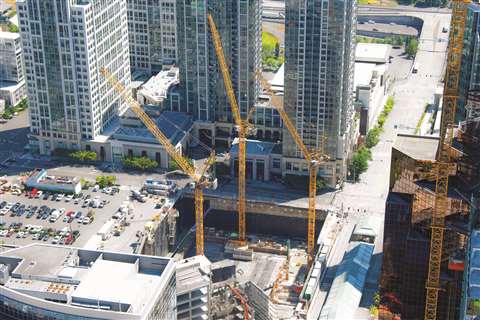 Morrow is expecting a positive forecast for the tower crane market in 2023. Pictured is Phase I of a mixed use office known as Bellevue 600, located in Bellevue, WA.
Morrow is expecting a positive forecast for the tower crane market in 2023. Pictured is Phase I of a mixed use office known as Bellevue 600, located in Bellevue, WA.
“The change in material handling for low-rise timber frame projects to using self-erecting cranes instead of high reach forklifts is a trend that is really taking hold,” said Fred Daniels, III, executive vice president, Uperio Holdings Americas. “Environment, Safety and Governance (ESG) issues are becoming more important for our customers. Traditional sectors for tower crane use, such as multi-story residential, commercial, healthcare and hospitality remain steady for Uperio and we’re fortunate to follow many long-term clients into new geographies as they grow.”
Morrow’s cautious optimism
While the market has certainly been improving over the last six months and the outlook is optimistic, Morrow’s Peter Juhren stated that up until that point, the rental rates were fairly depressed.
“But currently the outlook for 2023 is still positive based on today’s information,” said Juhren, president and chief operating officer at Morrow Equipment. “As we are all aware this could change due to economic, political and world events that are a threat. We still see many of our competitors focused on utilization over rates, which is keeping the market depressed over where it should be. The industry is challenged by flow-down contract terms from owners, as most contractors are pushing the risks and liabilities down to subcontractors. It’s very important that crane rental companies understand what they are committing to when they sign agreements. All too often they are not really understood until damages start to accrue and you can be upside down on a project quickly.”
Juhren is seeing freight costs in some cases have tripled year over year, with no real relief in sight. “Coupled with increased materials and labor costs, maintaining good rates is essential to continue to provide safe and reliable cranes,” he concluded.
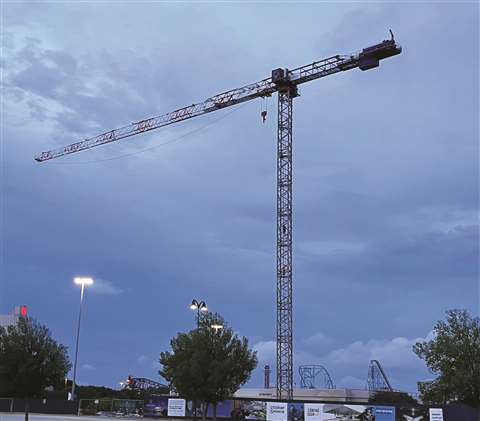 An Uperio tower crane at work at the National Medal of Honor Museum in Texas.
An Uperio tower crane at work at the National Medal of Honor Museum in Texas.
Risk management is also a market issue. “Whether it is the routine risks which our personnel face on jobsites, the commercial risks from contract conditions, risk transfer from prime contracts to subcontract that have poor payment terms and remove collection rights and finally the cost of ensuring the various risks,” said Daniels III. “Every tower crane rental company has the added complexity of having to deal with risk management – in both finding the right people to manage the risks as well as the cost of doing it.”
A ripple effect across the tower crane market
Another challenge that tower crane rental companies face is the fight to win contracts, in addition to higher interest rates. Frank Hegan, president of Crane Tech Solutions, said, “With less cranes up, the competition is stiff.”
Hegan said rental rates declined a bit in early 2022, but appear to have leveled off.
Whitey Lebsack, director of tower cranes for RMS Cranes, attributes the market’s biggest hurdles to several factors.
“Air rights issues, the price of work is going down and the cost of new equipment is going up and throwing things off balance,” he said.
There is no denying the hot competition and the ripple effect across the North American market.
“We see healthy, functional competition in the overall market,” said Daniels, III. “There are not that many tower crane rental houses in North America and we each have good participation within the SC&RA. A recent Top 50 survey of tower crane rental firms in North America (ACTTowerCrane50) showed that of the 2,221 cranes reported, 1,780 or 80 percent of the tower crane rental fleet is in 15 companies. This means what effects one of us, effects most of the cohort.”
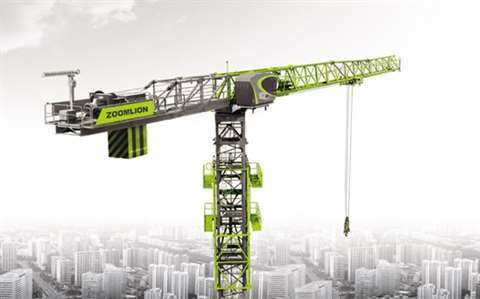 Zoomlion T600-32R
Zoomlion T600-32R
Zoomlion’s premier tower crane for the U.S. market is the T600-32R. Designed with input from the company’s U.S. distribution partner and featuring upgrades over previous models, the T600-32R offers up to a 279-foot jib length and 70,000-pound lifting capacity. Features focus on operator efficiency, with optional Zoomlion telematics. The T600-32R can be retrofitted with popular aftermarket systems. Zoomlion has designed the T600-32R with operator safety, accuracy and productivity in mind, the company said. Since entering the market in 2015, Zoomlion equipment can be found on jobsites throughout North America.
Comansa
Comansa has expanded its range of luffing jib cranes with the launch of the LCH300, its first hydraulic model, with a maximum load capacity of 17.7 tons and reach of 197 feet. The LCH300/16 t is available in various versions: embedded, supported on bases of 20 or 26 feet, or movable.
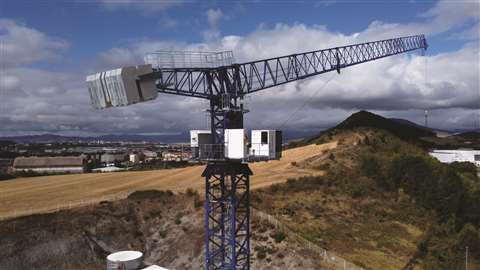 Comansa LCH300
Comansa LCH300
The crane can be assembled with 8.2 by 8.2-foot tower sections. Its modular jib has a reach of 82 to 197 feet, with configurations every 16.4 feet. It has a minimum working radius of 13 feet and a minimum radius of 30 feet when out of service. The maximum load capacity is 8.8 tons with the 1T configuration and 17.6 tons with the 2T configuration. The maximum load at the jib end is 7,496 pounds and 6,945 pounds, respectively. The luffing moves the jib and counter jib jointly by a hydraulic cylinder at the cathead and jib hinge assembly.
Favelle Favco
Favelle Favco Cranes has unveiled the Spider Climber, a new tower crane climbing system. The Spider Climber features articulating outriggers that can be articulated and extended for attachment to the building structural columns.
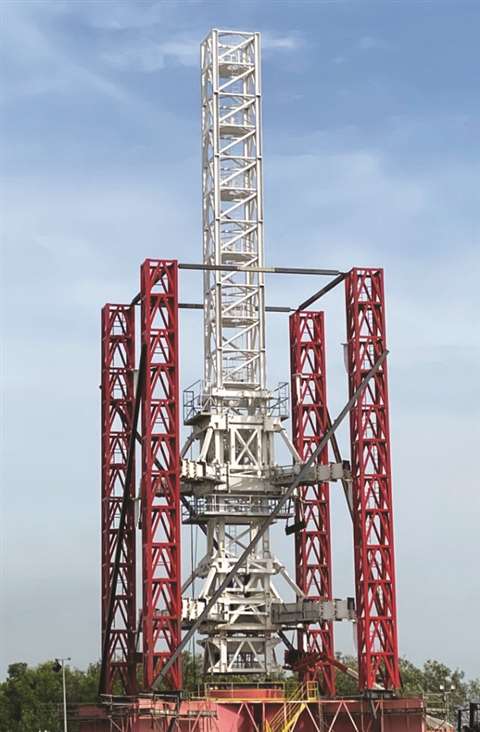 Favelle Favco Spider Climber
Favelle Favco Spider Climber
The articulated outriggers will allow the climber to fit different size cores and even offset the crane within the core if required. The Spider Climber is comprised of lower and upper climbers and a climbing ladder. The climbers are powered by electro-hydraulic powerpacks. The Spider Climber is designed to suit the 763 and 763R tower type. Is is also suitable for models using these towers such as the M900F-ST, M760E-ST and M760D. The upper and lower climbers are equipped with four outriggers. The main purpose of the outriggers is to connect the climber to its the support columns. Each outrigger is extendable by an integrated hydraulic cylinder and its length can be increased by adding one or two extension sections.
The outriggers length and angle adjustment feature enable the climbing system position in relation to support columns to be flexible. Tower position can be set to be central or at some distance offset from central position.
Terex
The new CTT 222-10 is the newest in the line of city class flat top cranes to be offered by Terex Tower Cranes. “City class” refers to the design feature of the crane that ensures it is the best option for use within city settings, and this is the adaptability of the crane.
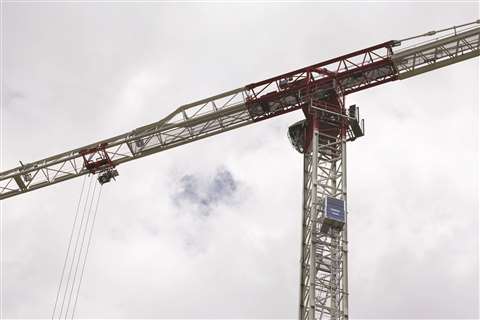 Terex CTT 222-10
Terex CTT 222-10
The CTT 222-10 can be easily set up and erected with a 1.60-meter, 1.95-meter or 2.10-meter tower mast. It has a S-pace cabin which provides optimal comfort and visibility. The cab has an adjustable slewing seat and built-in heating and air conditioning system. Other features include wide glass panels, protected by side bars, multifunction joysticks and the 7-inch touch screen color display that provides simplified crane control and monitoring.
Potain
Potain has recently rolled out two new tower cranes.
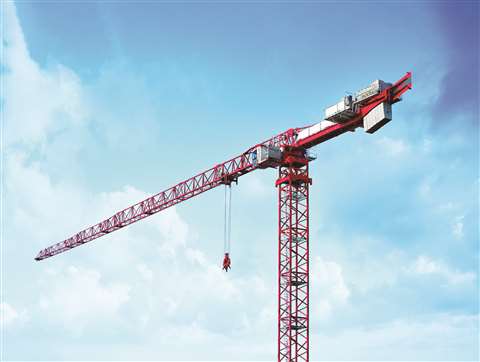 Potain MDT 489
Potain MDT 489
The first is the Potain MDT 489 top-slewing crane, which just made its first public appearance at Bauma 2022. It’s available in 22- ton and 27.6-ton versions, with each offering 262 feet of jib for broad coverage and reach on the jobsite. The crane’s combination of power and reach makes it ideal for infrastructure and other large projects, Manitowoc said.
From the self-erecting crane line, the Potain Igo T 99 is the latest model, which also made its debut at Bauma. The 6.6-ton unit is already winning admirers due to its compact dimensions, small footprint and intelligent design, the company said. Potain Smart Set-Up technology, remote-controlled operation and an ergonomic Ultra View Cab ensure the crane is simple to operate in a wide variety of scenarios.
STAY CONNECTED


Receive the information you need when you need it through our world-leading magazines, newsletters and daily briefings.




